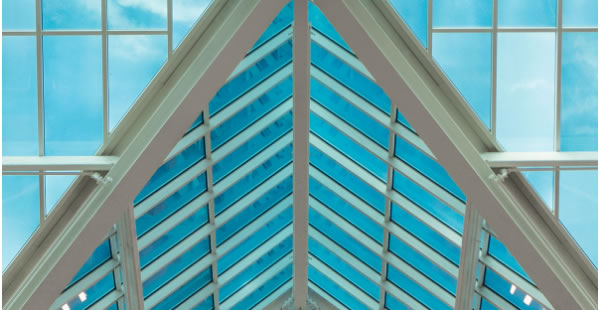
(Source: Colorado State University official website)
"Smart glass" is an energy-saving product that can be found on windows of cars, buildings and airplanes. However, smart glass usually takes a few minutes to reach the dull state, and repeated cycles between light and dark for a long time will also reduce the coloring quality. According to foreign media reports, Colorado State University (Colorado State University) chemists, through a better understanding of the working principle of smart glass at the nanometer scale, propose nano-level smart glass design methods, or will increase the speed of smart glass color change and Durability.
Colby Evans, a graduate student in the school, and Justin Sambur, an assistant professor in the Department of Chemistry, and others, are working on “electrically-color-changing†smart glass. Its working principle is to use voltage to drive lithium ions into and out of tungsten oxide transparent films. Evans said: "You can think of it as a see-through battery." A typical tungsten oxide smart glass plate, from transparent to complete color change, takes 7-12 minutes.
The researchers focused on electrochromic tungsten oxide nanoparticles, which are 100 times smaller than human hair. Experiments show that the coloring speed of a single nanoparticle is four times faster than a thin film composed of the same particles. This is because the interface between the nanoparticles in the thin film traps lithium ions and slows the coloring behavior. Over time, the performance of the material will decrease.
To prove their point, the researchers used a bright field transmission microscope to observe how tungsten oxide nanoparticles absorb and scatter light. When making "smart glass" samples, they constantly changed the amount of nanoparticle materials in the sample. As the number of nanoparticles increased, they observed the mutual contact between them and the change in coloring behavior. Then, they used scanning electron microscopy to take high-resolution images of the nanoparticles, covering the length, width, and spacing, to know how many particles were clustered together, how many were scattered, and so on.
Based on the experimental results, the researchers proposed that if the materials based on nanoparticles are manufactured and the particles are kept at the optimal spacing to avoid the trapping of ions, it is possible to improve the performance of smart glass. This method can also be used to guide the application research of batteries, fuel cells, capacitors and sensors.
In recent years, various high-tech traffic safety facilities and products have been favored by the industry in the highway safety protection projects implemented by the country. The wide application of these traffic safety facilities and products has played an important role in improving road safety and reducing traffic accidents. In various traffic safety facilities or products, solar road studs can clearly outline the outline and edges of the road in rain, fog and road bends, so as to induce the driver's line of sight, thereby eliminating road safety hazards. Solar road studs can play a very important role in delineating road contours in rainy and foggy weather and at corners, inducing the driver's sight and eliminating potential safety hazards.
During the day, solar panels absorb sunlight and convert solar energy into electrical energy, which is stored in energy storage devices (batteries or capacitors). At night, the electrical energy in the energy storage devices is automatically converted into light energy (controlled by photoelectric switches) and emitted by LEDs Bright light draws the outline of the road and induces the driver's sight. Solar Road Stud lights are a kind of protruding road signs, which are installed outside the yellow line on both sides of the road or at the ramp junction, used to outline the road, remind drivers to drive, and reduce accidents. This product uses monocrystalline silicon solar panels to charge high temperature resistant Ni-MH batteries without external power supply. The light-emitting unit uses high-quality, high-brightness LEDs from Taiwan Epistar chips. The product has a long service life, easy installation, environmental protection, stable performance, pressure resistance of more than 20 tons, and a fully charged battery that can work continuously for more than 200 hours, which is equivalent to 18 days in rainy days.
Road studs are suitable for installation on: roads with more than four lanes back and forth, but there is no separation zone in the middle and insufficient light at night; vehicle diversion points (around the triangular ground line); intersections/zebra crossings (deceleration prompt); railway ramps; sharp turns ; Toll station lane line; foggy areas (seaside, airport roads); accident-prone areas; highways and roads without street lights; urban sidewalks, park paths, etc., areas and road surfaces that need to beautify the night scene; guidance at elevated and tunnel entrances and exits Line position. Mainly play a warning role.
Conventional products solar traffic series products solar Road Stud lights, PC solar road studs, cast aluminum solar road studs, all incoming materials are strictly inspected and stored. Ensure that the products shipped from the factory are 100% qualified.
Road Stud
Solar Road Stud,Led Road Stud,Aluminum Road Stud,Solar Led Road Stud
Shenzhen Wide Way Optoelectronics Co., Ltd. , https://www.wdmtrafficlight.com